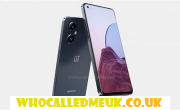

Opening and virtualizing a radio access network (RAN) is a pursuit with almost unanimous support - at least apparently. Operators, software developers and hardware suppliers united in this effort with varying degrees of strength. Motivating factors are different, but the commonly expected result is essentially the same: a disaggregated, software-based, open platform for RANs. Repeatedly and often overlapping initiatives are driven by alliances that have won the support of major telecommunications companies and new players. According to Stefan Pongratz, vice president of Dell’Oro, the proposal for this more flexible network architecture has also gone from cost benefits to a less restrictive framework that opens up opportunities for third-party development. Operators want more competition in the RAN market, and efforts to open and virtualize RAN contribute to this goal, but the increased complexity of the RAN network and the core of the mobile network is clouding this demand, Pongratz wrote in a research note. "[Research and development] required to provide a competitive 5G portfolio with increased RAN and core complexity, increased use of machine learning and automation in services, and the spread of new use cases in many different industries, possibly shifting the needle in the opposite direction and complicating entry for new participants" - he concluded. Ericsson, Nokia and Samsung have a lot to lose if the RAN space flattens to the point where their equipment becomes a commodity. Therefore, the RAN giants (only Huawei has a larger market share) reveal their presence and positions, contributing and participating in open RAN (O-RAN) and virtual RAN (vRAN) initiatives. Indeed, the disaggregation of network hardware from software on an open structure, thereby negating the value of a tightly integrated, but highly proprietary RAN hardware, appears to conflict with the business model of RAN providers. In the interviews with SDxCentral at MWC Los Angeles 2019, the management of each company shared a slightly different view on the trend of openness and virtualization. Ericsson expects architectural deviations "It is crucial for us that when we see technologies that allow our clients to become more efficient and flexible, more innovative, we need as technology leader to take them on board," said Ericsson EVP Fredrik Jejdling. "There are many elements in the primary domain or in the IT world, if you can, that will apply here," said Jejdling. He adds, however, that "this is such a unique, very complex environment that ensures radio performance, and we have solved it thanks to the custom-made ASIC ... Requirements for flexibility and other things mean that we need to reassess these vRAN structures in the eyes of the customer because he demands it. " At a high level, Ericsson has made progress in virtualizing control and traffic layers to automate server functions, but "it has never been at the level of full-stack virtualization, full-cloud RAN structure," Jejdling said. Ericsson joined the O-RAN Alliance in February 2019 and recently announced a partnership with Nvidia to create what companies define as "the world's first 5G RAN defined software". Jejdling described it as a study and further evaluation of the possibilities in vRAN. "I think that eventually different types of architectures will be combined," he said. "I don't think we should look at virtualization as the only building block for cost-effective, high-performance radios." There will likely be "more heterogeneous networks in which some use cases will be very suitable for more virtualized applications." Nokia welcomes new players with reservations The basic elements of 5G also drive this wave of development. Mike Murphy, Nokia's technical director in North and South America, said that the network architecture is essentially changing from "centralized architecture to more distributed [architecture] with more open interfaces and more virtualized systems." Simply put, "it allows some new players to enter, especially when you are virtualized and start distributing across the country," he said. "I don't think independent [5G core] introduces new players by itself. What he does to introduce new players more is to pursue what we call openness. " Murphy explained that most of the network infrastructure currently consists of private interfaces and work is underway on public definition by forums enabling operators to theoretically mix and match hardware and software for many vendors. "In some places it is easier, in some it is more difficult. It's all quite new, so this whole process will develop over time. " He said that suppliers approach this trend in different ways. "One of them is
Search for an article using the article search engine. You can enter keywords separarated by comma

Title: Vivo Y75 4G with a 44MP selfie cameradescription: Vivo

Title: Google Pixel Buds A-Series TWS Earbudsdescription: Goo
